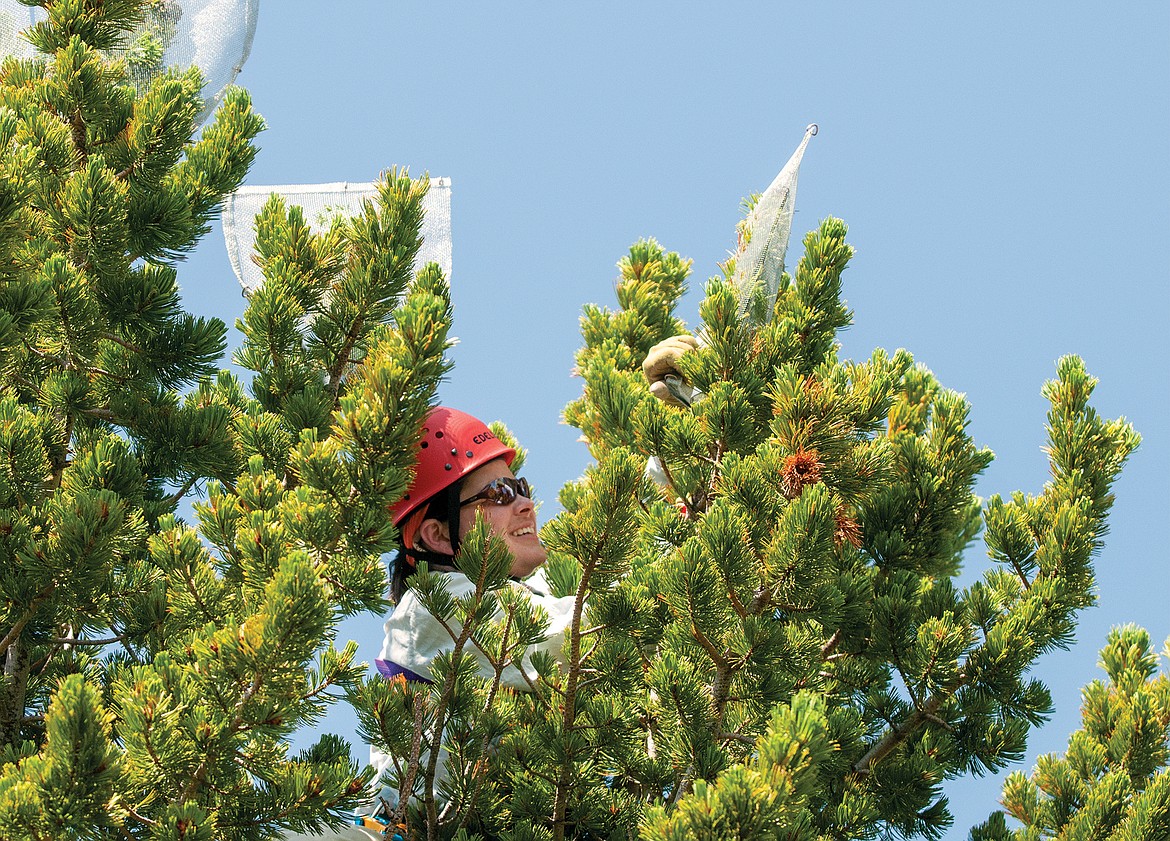Partnership helps with Glacier whitebark pine restoration
TAYLOR INMAN | Hungry Horse News | UPDATED 1 year, 3 months AGO
An influx of federal dollars through the Bipartisan Infrastructure Law and Inflation Reduction Act is expected to bolster Glacier National Park officials’ whitebark pine restoration efforts and help them lend assistance to other parks working to protect and expand the keystone species.
The National Park Service and American Forests have signed a five-year agreement to help return threatened white bark pine to its range. Initial projects in Yellowstone, Glacier and Grand Teton National Parks are part of $44 million in funding from the Inflation Reduction Act, the largest climate and conservation investment in history.
In Yellowstone, Glacier and Grand Teton National Parks, American Forests is collaborating with land managers to pioneer direct seeding trials. The method, which involves planting seeds directly into the ground, as opposed to planting seedlings grown in greenhouses, may offer a low-impact and cost-effective alternative to restore white bark pine in remote locations.
Why whitebark pine? Glacier National Park’s Vegetation Program Manager and biologist Dawn LaFleur said the tree is critical to its habitat, providing a microsite for other plants once it gets established in its usually harsh terrain.
“It helps other plants to grow because it actually provides protection from the wind and the sun,” LaFleur said. “It creates microsites where wind and soil gets blown in. It stops at the base of the tree and that allows other seeds to come in.”
Whitebark pine grows at the treeline in high alpine areas and its ability to foster plant diversity provides an important food source for wildlife. The tree itself also provides nutrients. LaFleur said there are 19 different species that eat its seeds, including grizzly bears, Clark’s nutcracker and red squirrels. According to the National Park Service, when whitebark pines have a good year, grizzlies are more likely to stay in higher elevations and not seek food sources near where humans live.
Blister rust fungus, a non-native fungal disease, is the primary threat to whitebark pine, according to the U.S. Fish and Wildlife Service. Other threats include mountain pine beetles, altered wildfire patterns and climate change. Scientists estimate that, as of 2016, 51% of all standing whitebark pine trees were dead, according to the U.S. Fish and Wildlife Service.
LaFleur said Glacier National Park officials became concerned with conservation efforts after a fire burned into a whitebark pine habitat in 1998. They began collecting seed cones that year and started planting them in 2000. The seedlings are resistant to blister rust and are planted in areas where researchers hope they will thrive without much competition, like a recent burn area. LaFleur said they also help to create a microsite for the seedling by planting it next to a rock or log that will provide a little bit of protection.
“Over time, as we’ve done more planting we’ve actually tweaked our techniques,” LaFleur said. “When we first started planting whitebark pine, if we were lucky, we got about a 30% survival rate after about three to five years. Now we’re up in the 60% range of survival rate after three to five years. So, tweaking our planting techniques to increase the survivability.”
Some of the earliest trees planted by researchers in the park have been growing for more than 20 years, but are around five to seven feet tall.
“I don’t know if you’ve spent much time up at Logan Pass, but all our trees are stunted at the higher elevations. And they can still be 50 to 100 year old trees, but people think they’re only like five or 10 years old because they’re so short,” LaFleur said. “Then it takes a long time for that tree to become mature enough to be able to produce cones.”
Glacier staff will also continue to propagate and plant seedlings, collect cones and monitor healthy whitebark pine populations. They’ll continue genetic testing for blister rust resistance, with the addition of testing for drought resistance.
She said they have been given more tools to be able to participate in sharing information with other parks.
“Whether it’s on a database or GIS with mapping, that funding is going to allow us to be able to share more information and participate in a larger network on our successes and our challenges, and be able to help other parks and other folks looking at doing whitebark pine restoration,” LaFleur said.
In addition to staff employed with the National Park Service, members of the Montana Conservation Corp and interns funded by the Glacier National Park Conservancy help with planting and propagation.
LaFleur said the additional funding will help the effort of creating ecological resistance and resilience.
“We’re excited to be able to continue our whitebark pine work and to be able to help other areas initiate and hopefully continue doing successful and healthy whitebark pine planting on the landscape,” LaFleur said.




